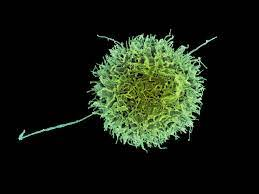Tuesday, November 7, 2023
A Brief Overview : Phagocytes & Phagocytosis
Thursday, October 5, 2023
The Immune System Versus Cancer Cells + Introduction
Hello, my name is Jassen from class 8C, and I am absent number 11. As of current, I am from Catholic High School, Saint Mary 2. In this blog, I will explain how the immune system prevents cancer. I will also explain what cancer is and how cancer negatively impacts the body. Happy reading!
Fortunately, our immune system evolved to kill cancer, and our immune system achieves this goal by using two special cells to kill cancer, namely:
- Killer T cells or T cells (cytotoxic T cells)
- Natural Killer Cells (NK Cells)
These two cells have a special task; for T cells, their task is to monitor our entire body and look for prohibited proteins. In the world, there are many proteins that are very dangerous if produced by cells after their growth period. The T cell's job is to find these proteins and kill the cells that produce them. They know the contents of these cells with something called the "MHC Class I System." Basically, MHC Class I is like a small window that provides information to our immune system. However, if the cancer mutates and stops creating that window, will it become invisible? Yes, but our immune system is more complicated than that. This is where NK cells play a role. If T cells look for things that should not be in the cell body, NK cells look for things that should be in the cell. If cells stop making MHC Class I, they are hiding something, and cells that are hiding something should be killed.
That's all I know about the immune system currently; the immune system is very complex. This is only a small fraction of what our body has to offer. If you want to learn more, I'll link you to some websites where you can learn more :
https://my.clevelandclinic.org/health/body/21196-immune-system
https://www.hopkinsmedicine.org/health/conditions-and-diseases/the-immune-system
https://www.ncbi.nlm.nih.gov/books/NBK279396/
https://my.clevelandclinic.org/health/body/24898-natural-killer-cells
https://en.wikipedia.org/wiki/T_cell
https://www.britannica.com/science/killer-T-cell
https://my.clevelandclinic.org/health/body/23370-complement-system







.jpg)
.png)
.jpg)
.png)









